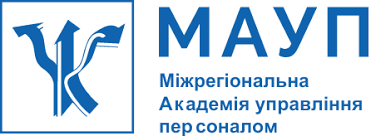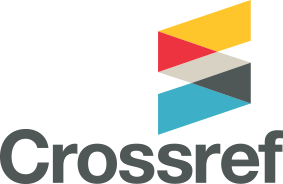EXPERIENCE OF USING SURFACE SYNCHROELECTROMYOGRAPHY METHOD (ON THE EXAMPLE OF THE TEETHAN® DEVICE) FOR VARIOUS PURPOSES IN CLINICAL DENTAL PRACTICE
DOI:
https://doi.org/10.32689/2663-0672-2023-1-7Keywords:
Teethan® device, surface synchroelectromyography, electromyography, databasesAbstract
Introduction. There are still inconsistencies regarding the validity and reproducibility of the masticatory muscles’ assessment results registered by the method of surface electromyography noted in the literature. Therefore, in this scientific study, the results of using surface synchroelectromyography method realized with specifically Teethan® device for various purposes in dental practice were systematized. Objective. To systematize data on possibilities of using surface synchroelectromyography method realized with Teethan® device for various purposes in clinical dental practice. Methods. Search of scientific papers which represented results of using surface synchroelectromyography method realized with Teethan® device was initially conducted within the PubMed Central database (https://www.ncbi.nlm.nih.gov/pmc/) and through the Google Scholar search engine (https://scholar.google.com/). The following myographic indicators were extracted and analyzed from the selected publications: POC (percentage overlap coefficient), BAR (barycenter), IMP (impact-muscular work), TORS (torsion), ASIM (asymmetry). Results. The analysis of relevant evidences and achieved results of implementing surface synchroelectromyography method into the dental practice considering available publications, made it possible to single out the following opportunities of using this method during various dental interventions: to assess the neuromuscular balance after realization of prosthetic and restorative interventions of different amounts; to objectify the influence of the pain factor and methods of its relief on the functional capabilities of the neuromuscular interaction among the elements of the dento-alveolar system; to register individual consequences of orthodontic and therapeutic interventions which are affecting and provided within the structure of the temporomandibular joint; to register changes of masticatory muscles activities during the treatment of patients with various types of occlusion disorders, dento-maxillofacial anomalies and other pathologies of the maxillo-facial system associated with functional and structural changes within the masticatory muscles; to optimize occlusal relationships within the structure of fully digital protocols used for dental rehabilitation taking into account the influence of the muscle component. Conclusions. Implementation of the surface synchroelectromyography method using the Teethan® device during prosthetic and restorative interventions contributes to faster adaptation of the patient to the provided dental status changes. The advantage of surface synchroelectromyography method realized with the Teethan® device based on the the possibility to provide pre-use calibration of the device taking into account the initial conditions of each individual patient, so all obtained diagnostic results can be interpreted as person-oriented, and the method itself can be interpreted as one of the tools for the individualization of dental treatment protocols.
References
Nishi S. E., Basri R., Alam M. K. Uses of electromyography in dentistry: An overview with meta-analysis. European journal of dentistry. Vol. 10(03). P. 419-425.
EMG correlations of edentulous patients with implant overdentures and fixed dental prostheses compared to conventional complete dentures and dentates: a systematic review and meta‐analysis / I. von der Gracht, A. Derks, K. Haselhuhn, S. Wolfart, Clinical oral implants research. 2017. Vol. 28(7). P. 765-773.
Is there a difference in the electromyographic activity of the masticatory muscles between individuals with temporomandibular disorder and healthy controls? A systematic review with meta‐analysis / B. Massaroto Barros, D.A. Biasotto‐Gonzalez, S.K. Bussadori, [et al.]. Journal of Oral Rehabilitation. 2020. Vol. 47(5). P. 672-682.
Correction of occlusion relationship during dental treatment with the use of surface synchroelectromiography method / M. Goncharuk-Khomyn, M. Slyvka, O. Bely, [et al.]. Young Scientist. Vol. 11 (63). P. 509-512.
Associations between the masticatory system and muscle activity of other body districts. A meta-analysis of surface electromyography studies / G. Perinetti, J.C. Türp, J. Primožič, [et al.]. Journal of Electromyography and Kinesiology. 2011. Vol. 21(6). P. 877-884.
Bormane D. S., Kakkeri R. B., Kakkeri R. B. Surface Electromyography Signal Classification for the Detection of Temporomandibular Joint Disorder using Spectral Mapping Method. International Journal of Advanced Computer Science and Applications. 2022. Vol. 13(8). P. 524-529.
Surface electromyography in the assessment of masticatory muscle activity in patients with pain-related temporomandibular disorders: a systematic review / L. Szyszka-Sommerfeld, M. Sycińska-Dziarnowska, G. Spagnuolo, K. Woźniak. Frontiers in Neurology. 2023. 14, 1184036.
Klasser G. D., Okeson J. P. The clinical usefulness of surface electromyography in the diagnosis and treatment of temporomandibular disorders. The Journal of the American Dental Association 2006. Vol. 137(6). P. 763-771.
Surface electromyography in orthodontics–a literature review / K. WoŸniak, D. Piątkowska, M. Lipski, K. Mehr. Medical science monitor: international medical journal of experimental and clinical research. 2013. Vol. 19. P. 416.
Szyszka-Sommerfeld L., Lipski M., Woźniak K. Surface electromyography as a method for diagnosing muscle function in patients with congenital maxillofacial abnormalities. Journal of Healthcare Engineering. 2020. Vol. 2020. P. 8846920.
Short-term effect of orthodontic clear aligners on muscular activity and occlusal contacts: A cohort study / M. Tepedino, P. Colasante, E. Staderini, [et al.]. American Journal of Orthodontics and Dentofacial Orthopedics. 2023. Vol. S0889-5406(23)00033-1.
Digital optimization of teeth set‐up in an edentulous patient with partial glossectomy: a case report / M. Carrière, J.B. Prudentos, A. Lecigne, [et al.]. Journal of Prosthodontics. 2023. Online ahead of print.
Im Y. G., Kim J. H., Kim B. G. Evaluation of Treatment Outcomes in Oromandibular Dystonia Using Surface Electromyography: A Case Series. 2021. Journal of Oral Medicine and Pain. Vol. 46(4). P. 143-149.
Surface electromyography for temporomandibular disorders: systematic review / A.I. Celinski, R.S. Cunali, D. Bonotto, [et al]. Revista Dor. 2013. Vol. 14. P. 147-150.
Surface electromyography of the masseter muscle during chewing: a systematic review / G. K. B. O. Nascimento, D.A.D. Cunha, L.M.D. Lima, [et al]. Revista CEFAC. 2012. Vol. 14. P. 725-731.
Quality of reporting masticatory muscle electromyography in 2004: a systematic review / S. Armijo‐Olivo, I. Gadotti, M. Kornerup, [et al.]. Journal of Oral Rehabilitation. 2007. Vol. 34(6). P. 397-405.
Role of Electromyography in Dental Research: A Review / S.R. Patil, B.R. Doni, C. H. Patil [et al.]. Journal of Research in Dental and Maxillofacial Sciences. 2023. Vol. 8(1). P. 71-78.
Evaluation of masticatory muscle function using digital versus traditional techniques for mockup fabrication: a controlled prospective study / S. Tecco, F. Cattoni, A. Darvizeh, [et al.]. Applied Sciences. 2020. Vol. 10(17). P. 6013.
Prosthetic Treatment Optimization with the use of All-Ceramic Constructions under Synchroelectromyography Method Supervision / I. Palyvoda, R. Osnach, S. Terekhov, [et al.]. Journal of International Dental and Medical Research. 2021. Vol. 14(1). P. 24-32.
Intraoral scanning, CBCT, and surface electromyography combination: Efficiency analysis of proposed diagnostic “Trident” algorithm during complex dental rehabilitation / I. Tukalo, V. Rusyn, W. Hirschowitz, M. Goncharuk-Khomyn. Journal of Dentistry. 2022. Vol. 121. P. 104015.
Does the Use of Surface Electromyography Could Improve Quality of Life among Patients Rehabilitated by Mandibular Overdentures on Different Attachments? / M. Fera, M. Goncharuk-Khomyn, O. Fera, [et al.]. Pesquisa Brasileira em Odontopediatria e Clínica Integrada. 2022. Vol. 22. P. e210131-e210131.
Surface electromyography reveal association between masticatory muscles with malocclusion class i and class iii skeletal in Javanese ethnic patient / D. Rahmawati, I.G.A.W. Ardani, T. Hamid, [et al.]. Journal of International Dental and Medical Research. 2021. Vol 14(4). P. 1542-1546.
Electromyographic Evaluations of Masticatory Muscle Activity between Patients with Skeletal Class I and III Relationships / P. Kulchutisin, T. Sowithayasakul, J. Pumklin, T. Piyapattamin. European journal of dentistry. 2022. Online ahead of print.
Electromyographic evaluation of masticatory muscles in a young patient with crossbite treated with rapid palatal expander: a case report / M. Maddalone, A. Nanussi, M. Varisco [et al.]. Journal of Contemporary Dental Practice. 2020. Vol. 21(11). P. 1279-1283.
Treatment of temporomandibular disorders of muscular origin with a silicon oral device (Alifix®): electromyographic analysis / M. Maddalone, E. Bianco, A. Nanussi [et al.]., Journal of Contemporary Dental Practice. 2019. Vol. 20(12). P. 1367-1374.
Electroporation technique for joint pain–Pilot feasibility study on TMD patients / G.M. Tartaglia, A. Gizdulich, M. Farronato [et al.]. Clinical and experimental dental research. 2020. Vol. 6(6). P. 642-649.
Electromyography-Guided Adjustment of an Occlusal Appliance: Effect on Pain Perceptions Related with Temporomandibular Disorders. A Controlled Clinical Study / S. Tecco, V. Quinzi, A. Nota, [et al.]. Diagnostics. 2021. Vol. 11(4). P. 667.
Clinical and Instrumental TMJ Evaluation in Children and Adolescents with Juvenile Idiopathic Arthritis: A Case—Control Study / M. D’Attilio, B. Di Carlo, F. Caroccia, [et al.]. Applied Sciences. 2021. Vol. 11(12). P. 5380.
Electromyographic Activity of Masticatory Muscles in Subjects with Juvenile Idiopathic Arthritis: A Case—Control Study / F. Caroccia, L. Passanello, R. Pipitone, [et al.]. Symmetry. 2022. Vol. 14(5). P. 962.
Variation of Occlusal Contacts and Activity of Masticatory Muscles Relation to Increasing the Capacity of Movement of the Cervical Spine after Trust Maneuver / M. Martini, C.N. Pecora, L. Ortensi, [et al.]. Journal of Dental Health, Oral Disorders & Therapy. 2016. Vol. 5(3). P. 00156.
Experimental Analysis of the Use of Cranial Electromyography in Athletes and Clinical Implications / A.D. Inchingolo, C. Pezzolla, A. Patano, [et al.]. International Journal of Environmental Research and Public Health. 2022. Vol. 19(13). P. 7975.
The Association between Masticatory Muscles Activation and Foot Pressure Distribution in Older Female Adults: A Cross-Sectional Study / G. Messina, A. Amato, F. Rizzo, [et al]. International Journal of Environmental Research and Public Health. 2023. Vol. 20(6). P. 5137.
Evaluation of the stomatognathic system before and after osteopathic manipulative treatment in 120 healthy people by using surface electromyography / A. Manzotti, C. Viganoni, D. Lauritano, [et al.]. International journal of environmental research and public health. 2020. Vol. 17(9). P. 3250.
Hugger A., Hugger S., Schindler H. J. Surface electromyography of the masticatory muscles for application in dental practice. Current evidence and future developments. International Journal of Computerized Dentistry. 2009. Vol. 11(2). P. 81-106.










